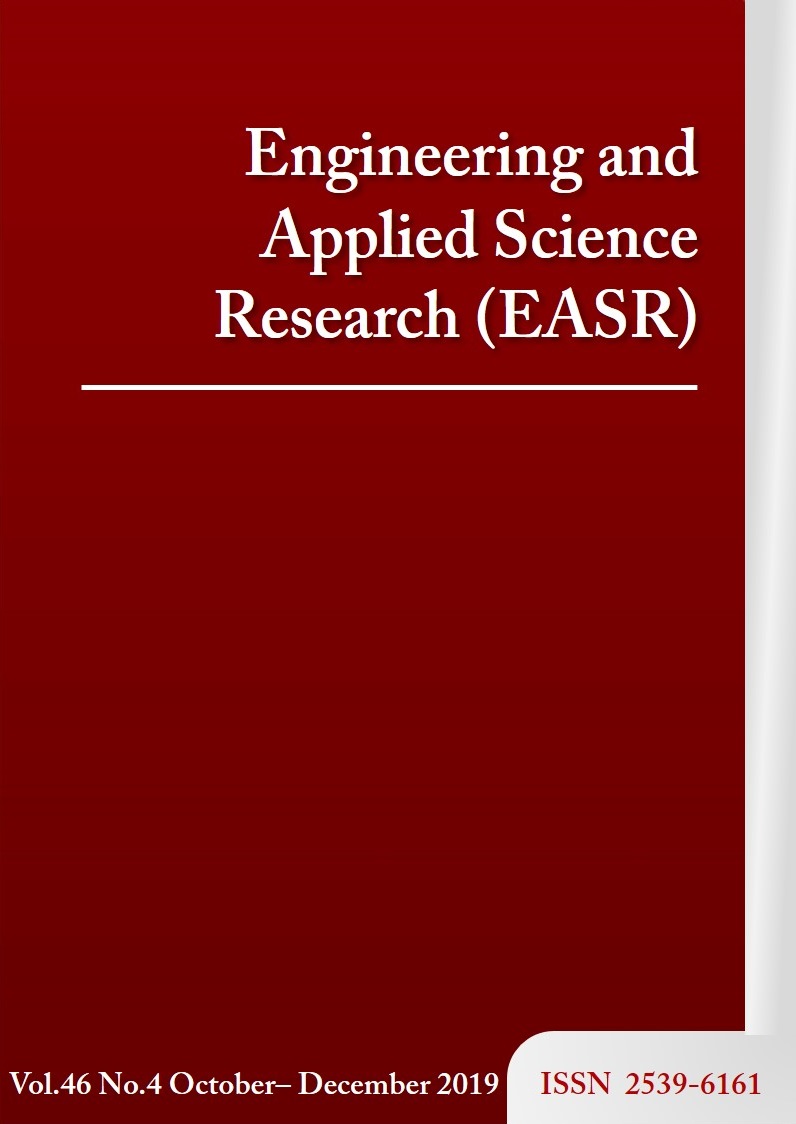Road safety status and analysis in Thailand and other Asian countries
Main Article Content
Abstract
Based on the Global Status Report on Road Safety 2018, the interrelationship of important road safety elements (such as Road Traffic Fatalities (RTFs), population, income levels, registered vehicles, law enforcement and others) of Thailand and other Asian countries could be achieved via a literature review and critical analysis. RTFs per 100,000 people had moderate correlations with motorization (registered vehicles per capita), while RTFs per 100,000 vehicles showed reasonable correlations with the number of registered vehicles per 100,000 people. When the number of registered vehicles per 100,000people increased, the RTFs per 100,000 vehicles decreased. The vehicles involved in RTFs in Thailand and other Asian countries were primarily 2/3-wheelers. As the proportion of 2/3- and 4-wheeled vehicles in Asian countries increased, the percentages of RTFs caused by 2/3- and 4-wheeled vehicles were enhanced. As the Gross National Incomes (GNIs) per capita of Asian countries enhanced, the road safety law enforcement was slightly better. Based on RTFs per 100,000 people, Thailand is one of the most hazardous countries for road transport in the world. In Thailand, a RTF (per 100,000 population) prediction model was derived using a limited time series with three RTF database sources. Motorization can potentially be used to predict the RTFs per 100,000 population in Thailand. In 2020, the anticipated RTFs per 100,000 people will be 29.4. That is greater than the target (18.0). Consequently, Thailand is unlikely to achieve its Sustainable Development Goals (SDGs) for road safety issues in the near future.
Article Details
This work is licensed under a Creative Commons Attribution-NonCommercial-NoDerivatives 4.0 International License.
References
[2] Klungboonkrong P, Faiboun N, Luathep P. Road safety analysis in Thailand and other Asian countries: urgent actions for Thailand. Int J Geomate. 2018;14(45):177-83.
[3] World Health Organization (WHO). Global Status Report on Road safety 2018. Geneva, Switzerland; 2018.
[4] World Health Organization (WHO). Global status report on road safety 2015, Geneva: World Health Organization (WHO); 2015.
[5] Klungboonkrong P, Faiboun N, Woolley J. Modelling road accident fatalities in Thailand and other Asian countries. Int J Geomate. 2018;15(52):91-8.
[6] Mohan D. Analysis of road traffic fatality data for Asia. J East Asia Soc Transp Stud. (EASTS), 2011;9:1786-95.
[7] Saaty TL. The analytic hierarchy process: priority setting, resource allocation. New York: McGraw-Hill; 1980.
[8] Klungboonkrong, P, Taylor MAP. A microcomputer-based system for multicriteria environmental impacts evaluation of urban road networks. Comp Environ Urban Syst. 1998;22(5):425-46.
[9] Klungboonkrong P. Development of a decision support tool for the multicriteria environmental impact evaluation of urban road networks [Dissertation]. Adelaide: School of Geoinformatics, Planning and Building, University of South Australia; 1998.
[10] Road Safety Direction Center. Report on an integration of road accident fatalities databases of Thailand. Bangkok: Ministry of Interior; 2017.
[11] Bureau of Non-Communicable Disease. The integration of road accident fatalities in Thailand. Bangkok: Department of Disease Control, Ministry of Public Health; 2017.
[12] World Health Organization (WHO). Global status report on road safety 2013: supporting a decade of action. Geneva: World Health Organization (WHO); 2013.
[13] World Health Organization (WHO). Global status report on road safety time for action. Geneva: World Health Organization (WHO); 2009.
[14] Borsos A, Koren C, Ivan J, Ravishanker N. Long-term safety trends as a function of vehicle ownership in 26 countries. Transp Res Rec J Transp Res Board. 2012;2280:154-61.


